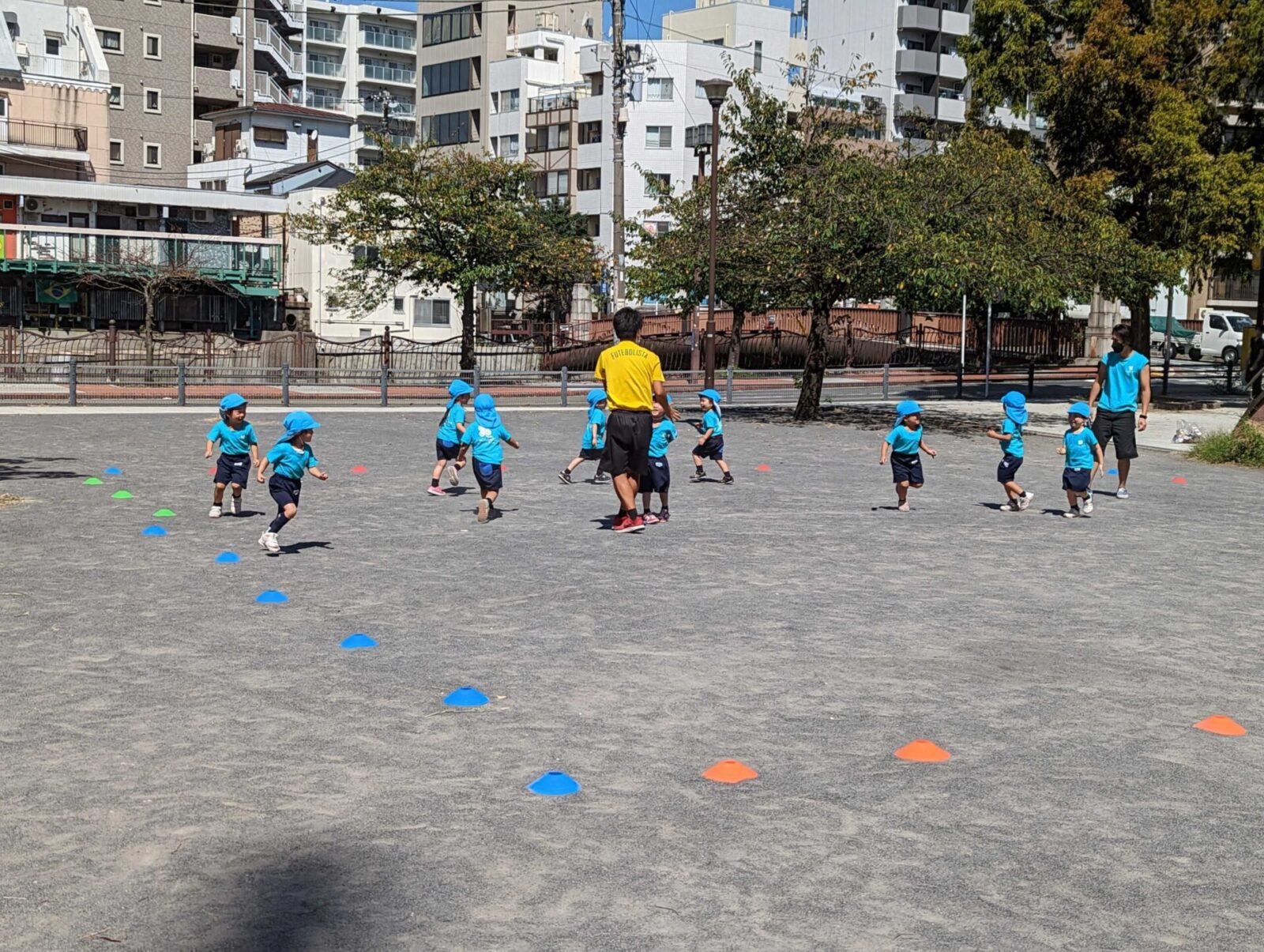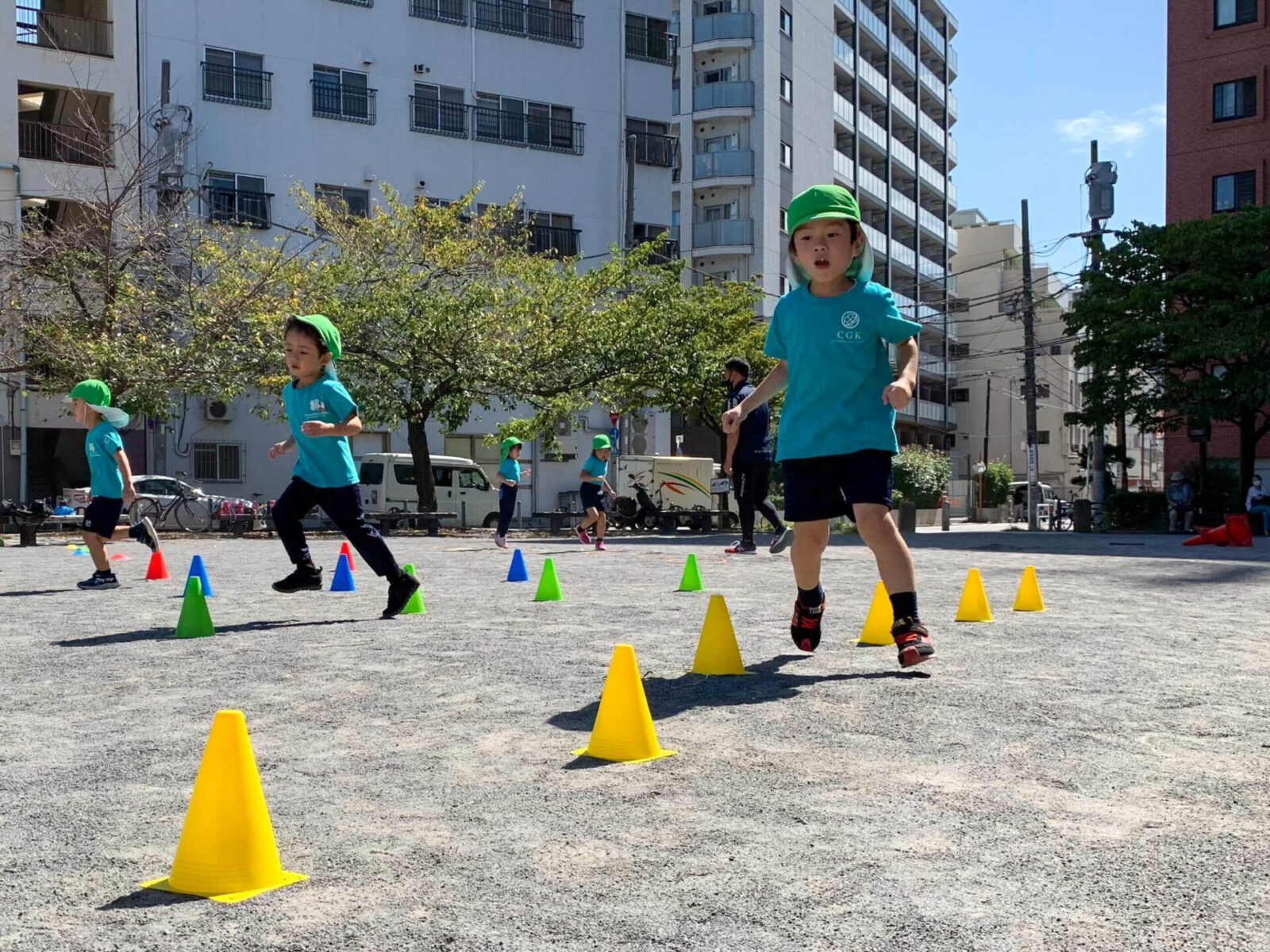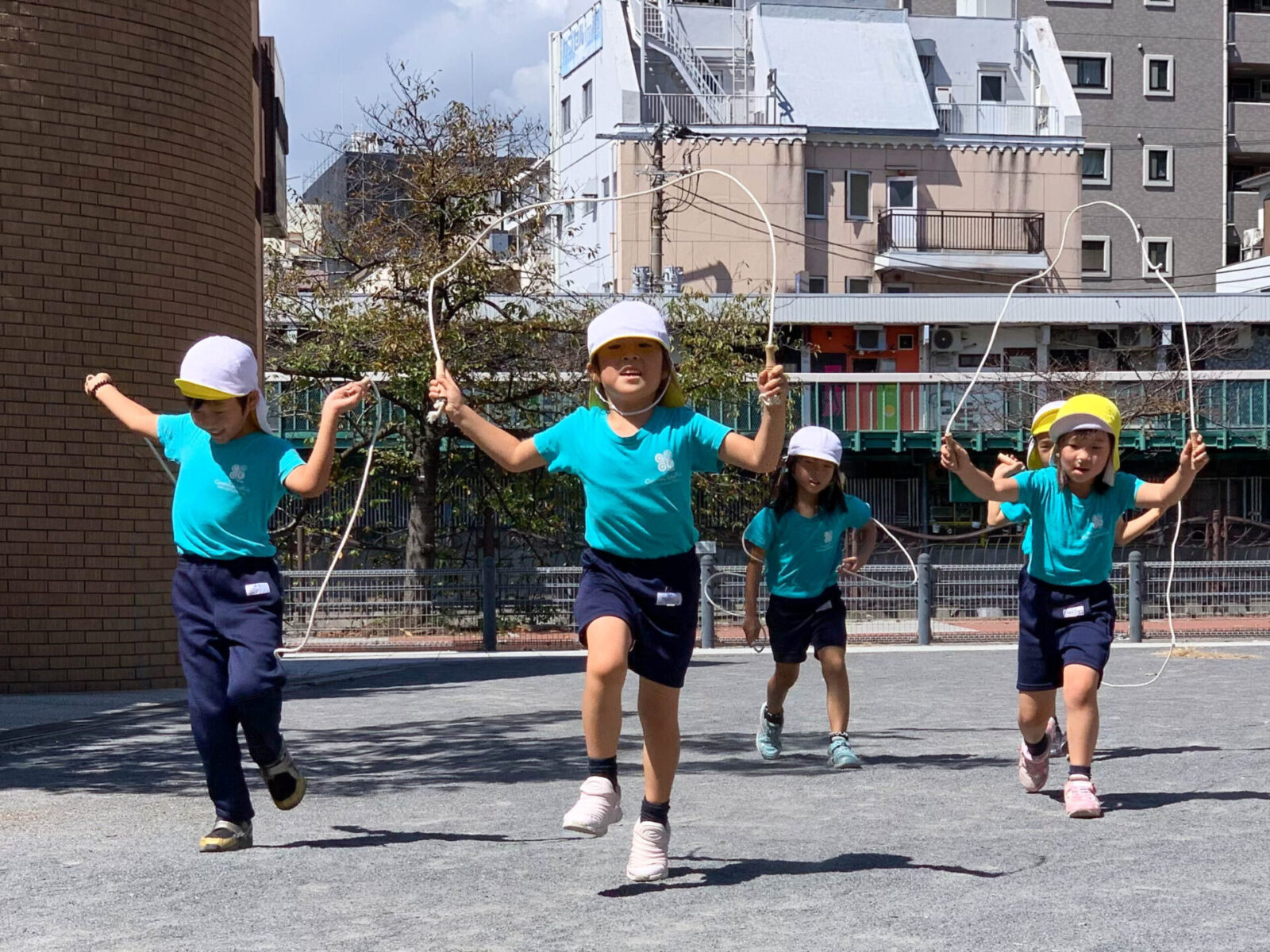Sep 16, Coordisports P.E. Report
Mr Shuhei comes to CGK Preschool every two weeks to lead his super fun PE lessons.
Each column will feature some insights or stories about physical development, reports for each PE lesson, and share some YouTube videos showing some physical activities that you can try at home with your child.
-
Expert Column
In my last column, I discussed the three purposes of coordination training. In this issue, we will take a deeper look at one of those purposes, “building the basis of movement.” Dr. Kazuhiko Nakamura of the University of Yamanashi, who specializes in physical education, growth and development and researches children’s physical fitness, has presented 36 basic movements to be acquired in childhood. The 36 basic movements include balancing movements such as standing, getting up, hanging, riding and floating; motor movements such as walking, running, spinning, swimming, and pedaling; and movements using tools such as hitting, catching, supporting, piling, and knocking. These 36 movements when experienced in a well-balanced manner help to build the foundation for all physical activities the children will engage in as they grow. And just as, without clean soil good crops will not grow, so too will children not grow to their fullest without exposure to these fundamental movements. However this is not to say we should just “practice spinning” over and over again. We should enjoy and experience the 36 basic movements naturally. In the next article, I will explain why we should experience them at an early age. (Reference: “A book to improve your motor skills” by Prof. Kazuhiko Nakamura of Yamanashi Gakuin University)
“A book to improve your motor skills” by Prof. Kazuhiko Nakamura of Yamanashi Gakuin University
-
Jungle (3-year-old) Class Lesson Report

【Explanation of the game of tag】
This PE lesson was conducted outdoors. Fukutomicho Park is about 500m from school. For adults, it is only 500m, but for children, it is a very long way. The basis of all physical activities is walking. Children who can walk a lot can jump higher, and children who can jump higher can run faster. The running movement is “walking + jumping.” Please try and make a habit of trying to take frequent walks with your child, not just only on weekends or holidays, and try to walk a long way (long for the child, not you). During our most recent PE lesson the Jungle Class did two main activities: (1) tag game and (2) running game. While playing tag, most of the children were able to escape while looking out for the demon (the person who was “it”). Though it may seem simple to us, actually, tag is a complex game. It requires two main actions, “being aware of the demon’s location” and “running away.” 3-year-olds are at the age where they are gradually becoming able to perform two or more actions at the same time and so tag is a perfect fit for them. In the future, we will add conditions and rules, such as increasing the number of demons or narrowing the escape area to find a safer space. This will increase their opportunities to perform two or more actions at the same time! -
Mountain (4-year-old) Class Lesson Report

【It is recommended to sit down for arm swing exercises.】
It was a pleasant autumn day, so we held PE at Fukutomicho Park. This time, we did three activities: (1) obstacle course, (2) arm swing exercise, and (3) relay in two teams. The obstacle course consisted of a (1) 10-meter dash, (2) ring jump section, (3) zigzag run, and (4) picking up cones with their feet. In the ⑷ “picking up a cone with feet” exercise, the children put their toes into a fallen cone and lifted it up with their feet to catch the cone in their hands. By performing this exercise, you are raising your knees higher than usual. When the knees are raised, the width of one step (stride) is widened when running, and the speed of sprinting increases. When I told the children about this, I could see nods of “I see” comprehension. The arm swing exercise was conducted in a sitting position. By swinging their arms in a sitting position, they are careful not to let their hands hit the ground, so they can naturally swing with their elbows bent. After repeating the exercise many times, they were able to swing their arms with their elbows bent even when they swung their arms standing up. You can practice swinging your arms while sitting at home, so please try it![Video] It is recommended to practice arm swinging sitting down first.
-
Sky (5-year-old) Class Lesson Report

【Let’s have fun jumping!】
It was a sunny autumn day, a little hot, not too humid and cool in the shade. PE was held at Fukutomicho Park. We did three activities (1) the passing-the-line game, (2) the short rope game, and (3) relay races. In the “passing the line” game, one point is awarded for passing the line where the demon is. If a demon touches you, you have to start over from the start. The players had to dodge, “juke” and fake out the demon to reach the goal. Some children watched the demon’s movements carefully and moved forward while others took a more direct approach and dodged to the left or right. The older children showed their ability to think, deciding their own moves according to the moves of their opponents. In the short jump rope, the children ran and jump-roped at the same time. The children also jump-roped by swinging it side-to-side while running. There is no need to make the rope go around once for each step, as in the running-jumping technique. Children can just turn the rope when they are ready to turn it while running. Even if they cannot turn the rope smoothly, they will enjoy the exercise of running. With continued practice, the rope will gradually become more compact, and each step will be enough to complete one lap. Please try and practice “running and jumping” in a fun and enjoyable way with your children at home.[Video] Short Rope | Run & Jump | Run and jump a lot to improve your short rope skills.
coordisports Inc.
Shuhei Otsuka
Website: coordisports
■Books
動画でわかる! 小学校体育 コーディネーション運動50 (体育科授業サポートBOOKS)
1年間まるっとおまかせ! 小学1・2年担任のための学級あそび大事典 (共著)
1年間まるっとおまかせ! 小学3・4年担任のための学級あそび大事典 (共著)
1年間まるっとおまかせ! 小学5・6年担任のための学級あそび大事典 (共著)






















